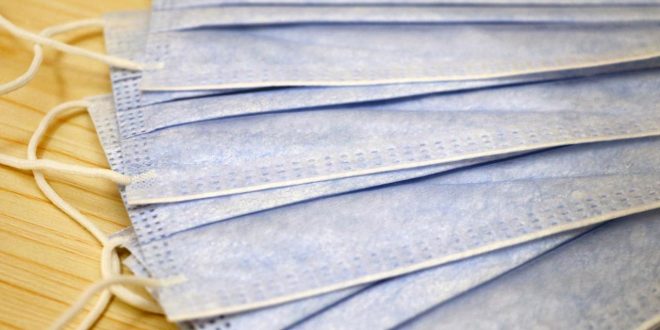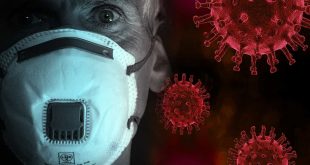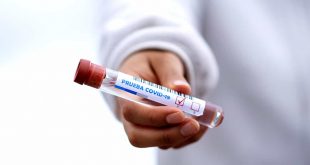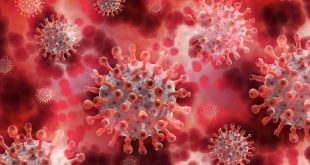States, cities, and retailers across the country are implementing mandatory mask policies in an effort to reduce the spread of COVID-19.
But statements from the Centers for Disease Control and Prevention and World Health Organization earlier in the pandemic may have impacted why people are choosing not to wear a mask. Both organizations now recommend masks for the public.
According to the CDC, the virus is spread mainly from person-to-person through the following ways:
- Between people who are in close contact with one another (within about 6 feet).
- Respiratory droplets produced when an infected person coughs, sneezes, or talks.
- These droplets can land in the mouths or noses of people who are nearby or possibly be inhaled into the lungs.
- COVID-19 may be spread by people who are not showing symptoms.
Health experts say evidence shows that masks can reduce the spread of COVID-19.
Where did the confusion about masks come from?
In the past, the Centers for Disease Control and Prevention have said that only people who were showing symptoms of coronavirus should wear a mask.
As new data about asymptomatic carriers grew, the CDC decided to change its recommendation.
Additionally, infectious disease specialist Peter Chin-Hong, MD, told the University of California San Francisco it also had to do with the lack of testing in the beginning.
“So, of course, you’re preaching that the juice isn’t really worth the squeeze to have the whole population wear masks in the beginning, but that was really a reflection of not having enough testing, anyway,” he said. “We were getting a false sense of security.”
When the pandemic started to ramp up in the United States, there was concern about the limited supply of personal protective equipment for health care workers.
UC San Francisco epidemiologist George Rutherford, MD, says this should have not been a problem.
“We should have told people to wear cloth masks right off the bat,” he said.

Chin-Hong sees it from a different angle, and says, culturally, the United States was not prepared to wear masks. He says the practice is more common in Asia, yet he still sees people in the U.S. choosing to ignore CDC guidance and local mandates.
“I think the biggest thing with COVID now that shapes all of this guidance on masks is that we can’t tell who’s infected,” said Chin-Hong. “You can’t look in a crowd and say, oh, that person should wear mask. There’s a lot of asymptomatic infection, so everybody has to wear a mask.”
Evidence shows wearing masks is effective in reducing the spread of COVID-19
Several studies have been conducted showing how masks help in the fight against COVID-19.
According to The New England Journal of Medicine, an experiment using high-speed video discovered that hundreds of droplets were blocked when covered by a damp washcloth. The droplets ranged from 20 to 500 micrometers and were made when someone said a simple phrase.
Another study conducted by Nature.com, a nature research journal, included people who had the flu or a common cold. Those in the study wore a mask and researchers found the mask dramatically reduced the amount of the viruses emitted in droplets and aerosols.

Health Affairs also published a study recently that showed the before and after growth of the virus when masks were mandated in 15 states and the District of Columbia. The study says a mask mandate showed a slowdown in the COVID-19 growth rate daily. After the first five days of a mandate, when compared to the five days before the mandate took place, the daily growth rate slowed by .9 percentage points. Three weeks after a mask mandate was in place, the daily growth rate slowed by 2 percentage points.
Death rates were also lower in countries that were used to wearing masks or had government policies in favor of wearing a mask, another study suggested.
In two separate instances, masks prevented transmission of the COVID-19.
In the first instance, a man tested positive for the virus after flying from China to Toronto. He wore a mask while flying as he had a dry cough. 25 people near him tested negative for COVID-19.
In the second instance, two Missouri hair stylists tested positive for COVID-19 and had worked with 140 clients. The stylists and all clients wore a mask, and no clients tested positive.
Who do masks protect?
“I think there’s enough evidence to say that the best benefit is for people who have COVID-19 to protect them from giving COVID-19 to other people, but you’re still going to get a benefit from wearing a mask if you don’t have COVID-19,” said Chin-Hong.
Masks are able to prevent larger drops from turning into smaller droplets that can travel farther.
“What you want is 100 percent of people to wear masks, but you’ll settle for 80 percent,” said Rutherford.
Researchers predicted that instead of a strict lockdown, if 80 percent of the population wore a mask, that would reduce the spread of COVID-19 more.
Chin-Hong says as long as your mask covers your mouth and nose, it will benefit you and those around you.
“The concept is risk reduction rather than absolute prevention,” said Chin-Hong. “You don’t throw up your hands if you think a mask is not 100 percent effective. That’s silly. Nobody’s taking a cholesterol medicine because they’re going to prevent a heart attack 100 percent of the time, but you’re reducing your risk substantially.”
 The Argus Report Read about it!
The Argus Report Read about it!





